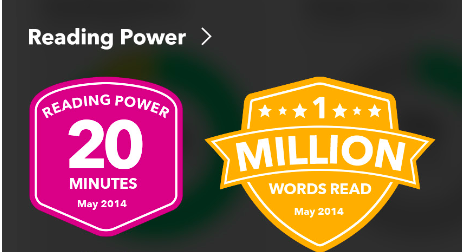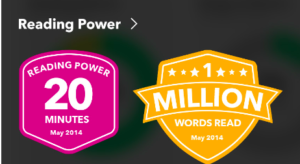

If we are going to create more college and career-ready readers, it is mission critical to allocate a significant chunk of time every day for students to simply engage in the act of choice, independent reading with texts (books, newspapers, magazines!) they are totally jazzed to read. Why? Because increasing the volume of reading time is the simplest strategy for improving reading achievement. Think of it this way: increased time to read = increased reading volume = increased reading proficiency.
Creating space in the school day for more reading time increases the opportunities for students to “get lost” (in a good way!) in their texts. Becoming absorbed in text is one way readers establish what Mihaly Csikszentmihalyi calls a “flow experience”, meaning the student is completely involved in what she is doing at a very high level of concentration. In other words, she’s totally in the zone. [3] Not sure how to carve out reading time in an already packed school day? This article in Educational Leadership provides straightforward tips any teacher can implement.
Having allocated the time for reading, many teachers report students initially struggle to simply sit and read. This is not surprising, as most students have not yet built the reading stamina muscles necessary to persist. Below are some strategies for helping students to build these muscles and to work toward becoming stamina superstars.
-
- Pep Talks: Like a coach on the day of a big game, pull your students into a huddle and pump them up to be stamina warriors. Try telling students, “Your brain is a muscle that gets stronger and stronger every time you read. Today and every day we are going to work this muscle and increase your reading power. We will start with just a few minutes and we will build and build as you become a stronger reader!” Incorporating chants is another way to pump kids up before sending them off to read. Find a motivational style that suits you and take a minute or two each day to remind, reinvigorate, and reinforce the power of reading.
- Training: The goal is to start small and work up, training students’ brains and bodies for increased periods of sustained silent reading. Below is a sample stamina training regimen that can be adapted based upon the age and ability of students. Day 1: 10 minutes
Day 2: 15 minutes
Day 3: 20 minutes
Day 4: 25 minutes
Day 5: 30 minutesThis 5-day plan can be modified with smaller daily increases if students need two weeks. It can also be extended should you have the luxury of more than 30 minutes for sustained reading.It may also be helpful to chunk the time and provide “half times” for students, especially if kids are wiggly or restless. Try telling students, “Our goal is 20 minutes today. We are going to read hard for 10 minutes, take a stretching break, and then dive back into our books for another 10 minutes of power reading.”Regardless of what your regimen looks like, make a digital timer your best friend. Make a big deal about setting the timer – “Today, we are going to read with our minds on fire for 20 minutes!!” – and prominently display it to hold students and yourself accountable to that day’s goal. - Goal Setting: Inviting students to set, track, and monitor their stamina goals is super empowering. Simple tracking tools like bookmarks or logs where students can jot the date, their reading goal (ex: Today I will read 20 pages or When I feel myself getting distracted, I will take a quick stretch and then get back into the book) and a reflection upon whether they met or exceeded that goal are powerful artifacts to further motivate student investment in improving stamina.Bonus: These tools foster a growth mindset and, even better, the motivation to read more. Inviting students to share their goals with one another at the end of the reading session is a simple way to create peer accountability and support.
- Motivational Charts: Classroom charts celebrate stamina and motivate students to rock on with their reading. For example, a Stamina Superstars chart may include each student’s picture and a pocket to place an index card with that day’s stamina goal as well as the current title of the text he is reading. Other classroom charts may reinforce strategies for staying on task with reading.Chart: How to Be a Stamina Superstar
– Set a goal before reading and then monitor progress toward that goal while reading
– Have something on deck so when you’re finished you can dive right into the next text
– When you feel yourself getting distracted, take a quick stretch and get right back into the textAs students determine additional strategies for being stamina superstars, add those to the chart. Not only does this foster increased self-regulation, it also encourages students to own and employ these tried and true strategies. - Celebrations: Read hard, play hard. Sitting and reading for 30 minutes (or more!) is no small feat. Celebrate these daily wins with a chant, a brief dance party or a shout out session where students celebrate each other’s accomplishments.
[1] Allington, R. L. (2012). What really matters for struggling readers: Designing research-based programs. Boston, MA: Allyn and Bacon.
[2] Gallagher, Kelly. (2003). Reading Reasons. Portland, ME: Stenhouse Publishers.
[3] Csikszentmihalyi, M., & Csikzentmihaly, M. (1991). Flow: The psychology of optimal experience (Vol. 41). New York: HarperPerennial.
Posted on 1.Jan.16 in Literacy Strategies




